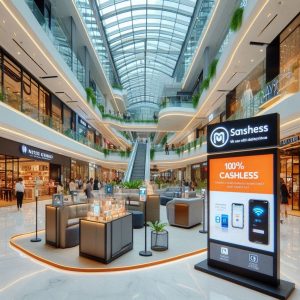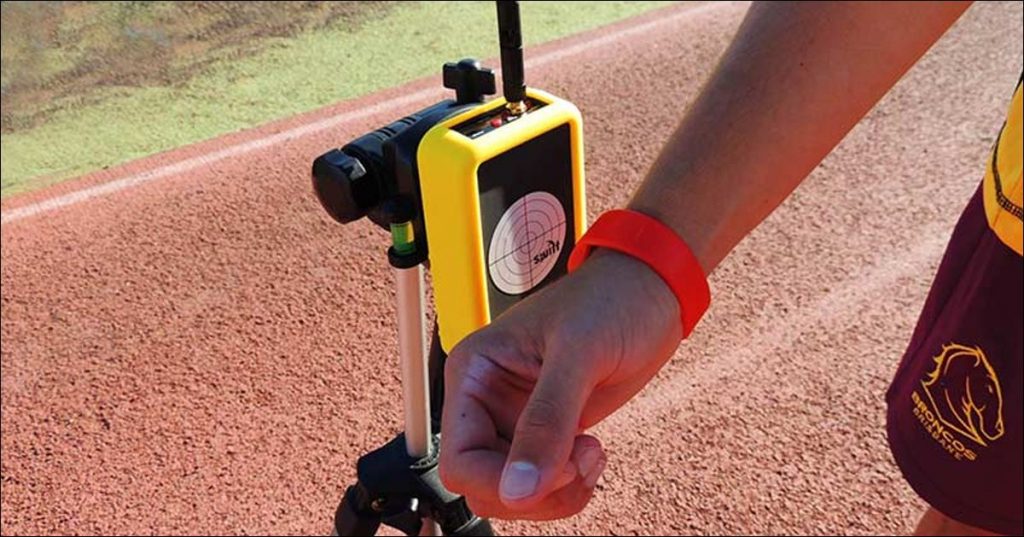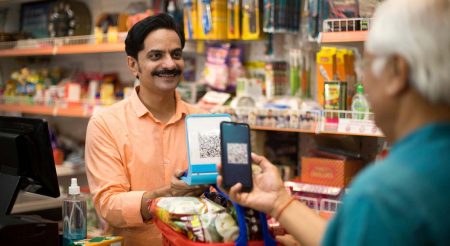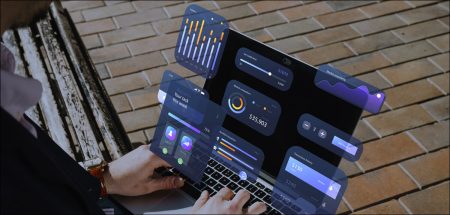In the world of enterprise Time is money and the best example of its importance is showcased in the industry of sports. Sporting events, be it the Formula One or the Olympics have often relied on time to declare winners. Baron de Coubertin who coined the phrase Citius, Altius, Fortius meaning Swifter, Higher and Stronger as the motto for the Olympics could perhaps thank RFIDs (Radio Frequency Identification) and modern-day timing devices for making the Olympics such a close-contest. The absence of such a technology may have risked the motto of Olympics besides making it a boring fest.
A group of Dutch University Students were the first to incorporate RFID technology in 1993 and since then the framework has proven itself at race and track events of all sizes. In the last two decades the RFID technology has gone through major evolution helping it enable major sporting events including the Olympics held once every four years. With time, the margins between winners and the runner-up have turned as narrow as one-hundredth of a second or 40 times faster than the blink of an eye.
Milorad Cavic, the Serbian swimmer lost out to Michael Phelps by a margin of 0.01 or one-hundredth of a second to give the latter a gold medal in the 100-meter swimming race of the 2008 Summer Olympics. A narrow margin may have been a bitter moment for Cavic who had infamously remarked for Phelps to be defeated prior to the event.
Besides remarks from Cavic, the world was waiting to watch Phelps equal Mark Spitz’s record of seven Olympic medals. By the end of the race, it must have been agonizingly difficult for Cavic who compared the one-hundredth second of a loss with a distance as short as a “finger-nail”. For Phelps, the contest with Cavic was eerily similar to his previous contest with Ian Crocker at the Athens Olympics of 2004. At the previous Olympic event, the US legend won against Crocker by a margin of four hundredths of a second. Going by Cavic’s logic, the contest with Crocker may have been as narrow as a finger.
Margins of less than one-hundredth of seconds are not rare. Take for instance, Formula One racing events. Brazilian Rubens Barichello lost by 0.011 seconds to German legend Michael Schumacher at the 2002 United States Grand Prix. In the words of Valterri Bottas, the GP driver for Mercedes, a margin of 0.001 seconds (one-thousandth) to Ferrari’s Sebastian Vettel at the pits was more of a “real shame” causing loss of a front row spot. With athletes committed to winning by margins as low as one-thousandths of a second, it becomes imperative for organizers to invest in relevant technology.
Evolution of Timing
It was not until late 1940s that race organizers started investing in technology. Initially, these efforts were to instil credibility in games such as horse racing which were plagued by charges of corruption. British photographer and among the fathers of Motion Photography, Eadweard Mueybridge’s, work on photography by the end of the 18th century was inspiration for technology service providers. It is also reported that a letter by the iconic photographer to a journal may have nudged sporting organizers to even consider motion photography in sports. By 1932, Kirby cameras had made their presence in the sporting arena but it was only by 1948 that motion photography made its way at the Olympics.
At the 1948 Olympics, the games had evolved from the revolvers of 1896, the handheld stopwatches and chronometers to a photo-finish camera. Codenamed the Magic Eye, this photo-finish camera operated on a simple setup — athletes walking in the line of a thin beam of light would cause a circuit to break resulting in a “Tada” moment. While the Magic Eye could count to the nearest hundredth of a second, declaring a winner was not an easy proposition. The technology back then needed manually transporting the film to a dark room and could take anywhere from 30 minutes to an hour to declare winners. The cameras used at the finish line today are capable of shooting at 10,000 frames per second (Rio 2016). For comparison, the normal smartphone camera registers 60 frames per second.
At track events, meanwhile, the timing system evolved into an electronic pistol connected to a timing system via cables. A secondary connection attached to the start block detects premature runners. The tracking linked to pressure sensors embedded within the sprinters start-block calculates the total time spent by an athlete in covering distance.
The technology at marathon events involving thousands of participants could be slightly different. It basically involves an Ultra High frequency device connected by chips. A marathon UHFID system could comprise of UHF antennas, high-power RF Readers and local / cloud-based application to retrieve data from a chip on a real time basis. The definition of real-time could vary from seconds to micro-seconds at such marathons.
Credibility Building Exercise?
Organizers realize errors in judgement not only result in viewer distrust but also jeopardize their credibility. The risk is too tall to calculate at big events such as Olympics where nations participate. A common technology framework used to measure athlete performance reduces chances of bias error and offers organizers the benefit of credibility & authenticity. Thereby, an organizer is able to establish a brand that oozes honesty and integrity.
Sachin Rustagi, CEO at Edify Sports shares, “In 2018, we timed a triathlon result where the winner timed 13:45:52.249 while the second winner entered a timing of 13:45:52.743 (494 microseconds). When organizers see this level of accuracy, it gives us immense pride and motivation to do our job with accountability and purpose.“
Building trust may have been a major reason why modern-day Olympics have focused on enabling innovative technology once every four years. Race timing, for instance at the London games in 2012 were 40 times faster than the blink of an eye (one-thousandth of a second). The Tokyo Olympics of 2020 onboarded cutting-edge technology — Panasonic enabled contactless biometric data display technology while Swiss time-keeper Omega enabled athletes with sensors attached to their clothing. These sensors could take anywhere from a few micro-seconds to one-tenth of a second to collect data, process, and transmit it to their nearest receiver. Besides, technology leaders like Intel showcased how Artificial Intelligence and Machine Learning could be utilized at the world’s biggest sporting event. But despite the robust technology, there still lies chances of errors.
The Olympic timing system faced flak with complaints of errors after four dead-heats in non-finals. A dead heat refers to a situation where participants are judged so close that no clear winner can be declared. The case of Australia’s Emma McKeon who was tied with Chinese Yufei Zhang was among the hottest of controversies among the dead heats. While footage showed the Australian touching the wall first judges were quick to point out that it was a Tie. The walls of an Olympic swimming pool despite fitted with a touch sensitive technology failed to register the touch from McKeon. Organizers explained that McKeon may not have touched the wall “hard enough” leaving McKeon and her supporters disgruntled.
Will it work for an enterprise?
Despite the limitations, the technology used to empower major sporting events has a great use-case for enterprises. Meaningful applications of RFID and timing systems can enable speed in operations and thereby generate better customer experience. For example, existing RFID technology can be empowered with high-FPS Flash Cameras to reduce the waiting time at toll-booths across India. The National Highways Authority of India guidelines say wait-time at toll plaza should be less than 10 seconds. Also, vehicle traffic should be restricted within 100 meters to the toll gate. Toll booths across India currently scan vehicles at dedicated kiosks. A high-power camera can enable toll collection within the approach of 100 meters.
RFID also presents as a use-case in the food, metallurgy, mining, and process industry. Metallury and mining industry can leverage from the precise timing offered by RFIDs. These can also be engaged with seismometers to automatically provide meaningful cues to miners. Food industry can track speed of food-delivery agents zipping through narrow lanes or in production facilities where timing is paramount.
“RFID technology can be greatly leveraged by firms in the business of events and conferences, as they can track the movement of participants across various halls, stalls to gather audience statistics. Data on which speakers attracted most crowd, which ones had the most attrition and which sponsors or product stalls attracted most crowd could help marketeers”, said, Nimesh Sharma, who is in the business of events, and helps corporates for Attendee Analytics. Armed with these analytics, the corporates can pitch for better speakers, sponsors, and take the event engagement to the next level.
Written for Sify.com by Prasanna Kr Srivastava with edits and additional inputs by Sairaj Iyer.
In case you missed:
- None Found









